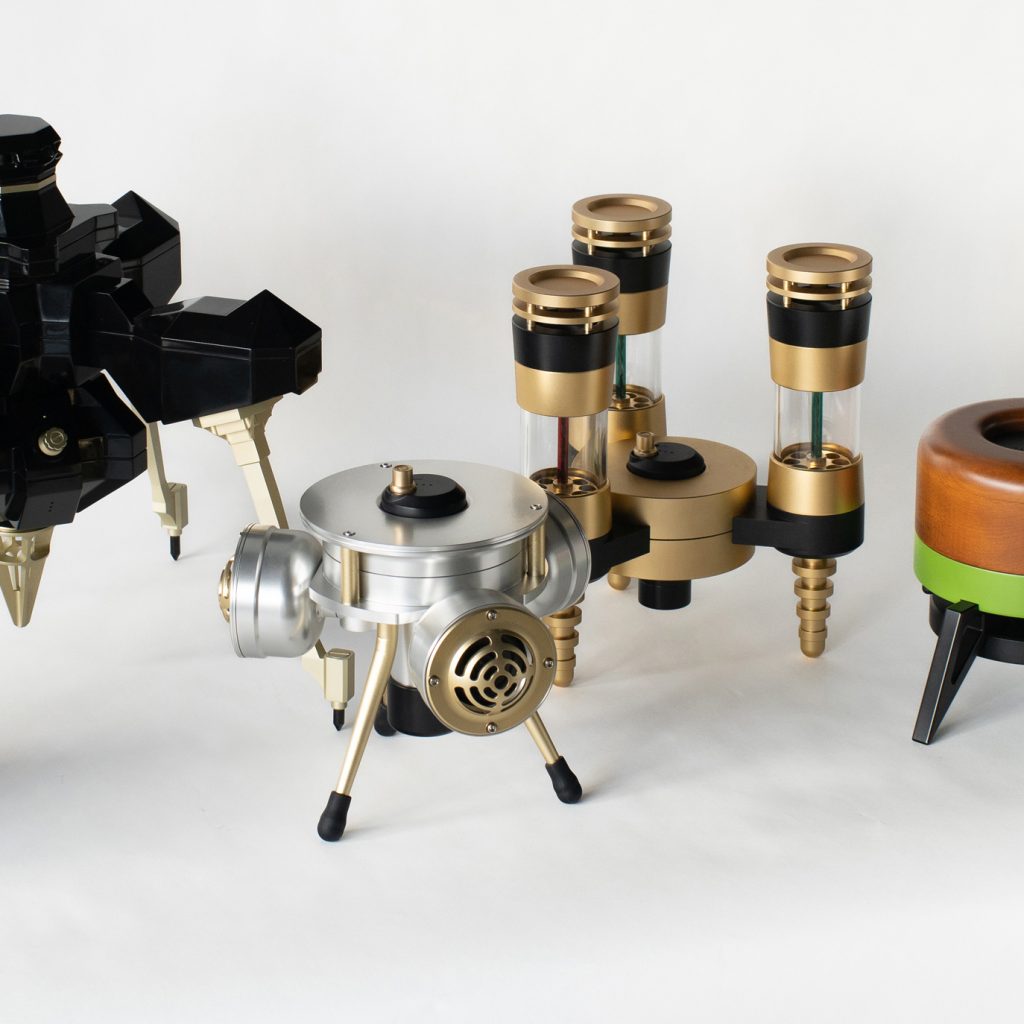Artist Interview: Aki Inomata
Discussing nature, cultural appropriation and ornamentation with the artist famous for her hermit crab series

Born in Tokyo, artist Aki Inomata has been exhibiting her work since 2004. She received an MFA in Intermedia Art from Tokyo University of the Arts in 2008 and is a recipient of the 2014 YouFab Global Creative Awards Grand Prize.
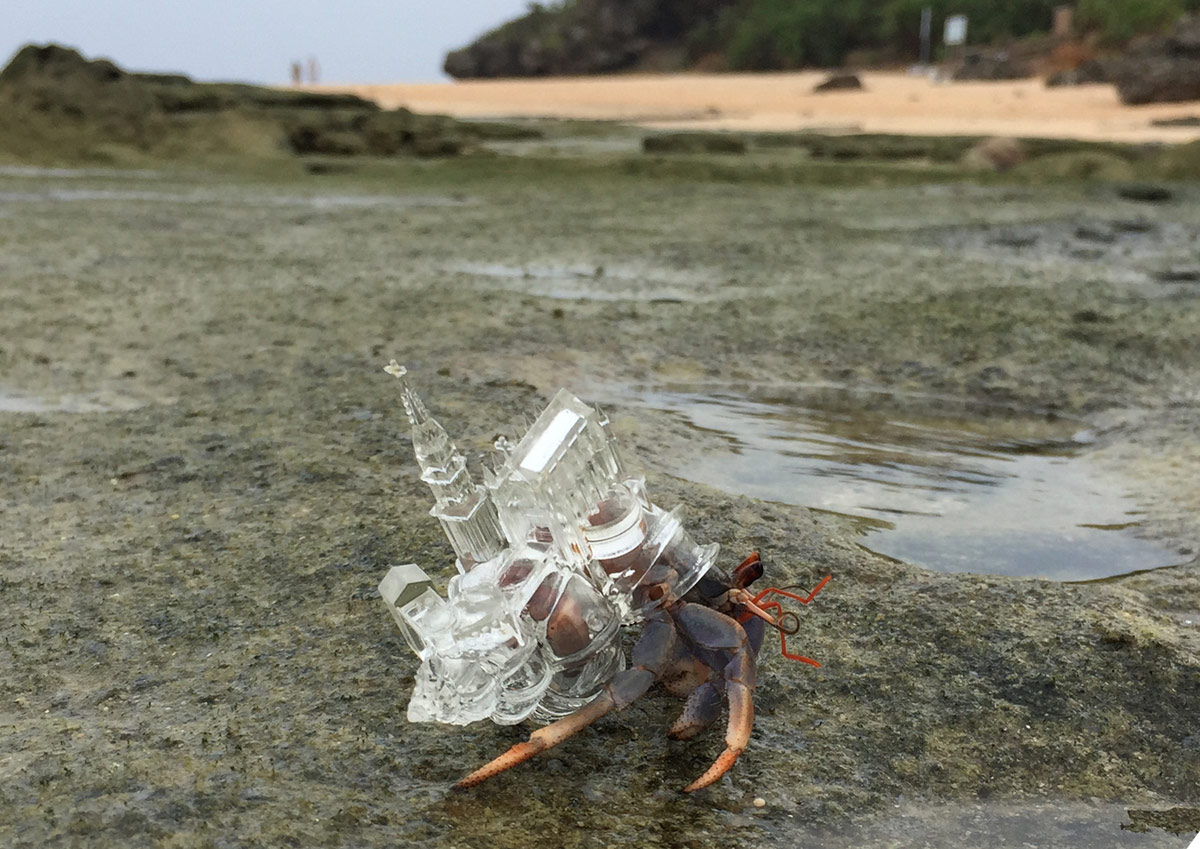
Over the last couple years, her “Why Not Hand Over a ‘Shelter’ to Hermit Crabs?” series has received recognition in Japan and abroad. The Japanese term for hermit crab is yadokari which means a tenant or someone renting a home and Inomata’s work elicits the meaning of the Japanese word and takes it to another level. In 2009, Inomata studied the natural shape of hermit crab shells using a CT scanner and used this data with a 3D printer to reproduce the crustacean domiciles, but with an additional flourish. On the surface of the shell, Inomata has placed architectural structures from around the globe. The latest installment of her series, subtitled “White Chapel,” incorporates wedding chapels on the surface of the shells. For this work, Inomata remarks that in Japan approximately 60% of weddings are conducted in these chapels, yet only 1% of the population in Japan is Christian.

Although her work involving hermit crabs and their modified 3D-printed domiciles was what first intrigued us, her prior work is also thought-provoking and engaging. We recently stopped by the French Institute in Tokyo to speak with Inomata, while she was exhibiting her series “Why Not Hand Over a ‘Shelter’ to Hermit Crabs?” to delve into her work and process.
Much of your work involves animals, their ability to create or appropriate shelter, and their relationship with humans. How much of a role do animals have in your creative process?
Animals have always contributed to my creative process. They’ve always been with my works. It’s hard to pin down a percentage of how much they’ve helped because it varies by the works I’ve created. For example, in the work “girl, girl, girl…,” the bagworms were a huge part of the process. Whereas in the work, “I Wear the Dog’s Hair, and the Dog Wears My Hair,” the dog was not a large part of it. I didn’t raise all the animals myself, but I have raised some of them. As a child, I always had creatures, like tadpoles, fish and cats. But since their lifespans are much shorter than humans, I’ve either lost them or gotten new ones.
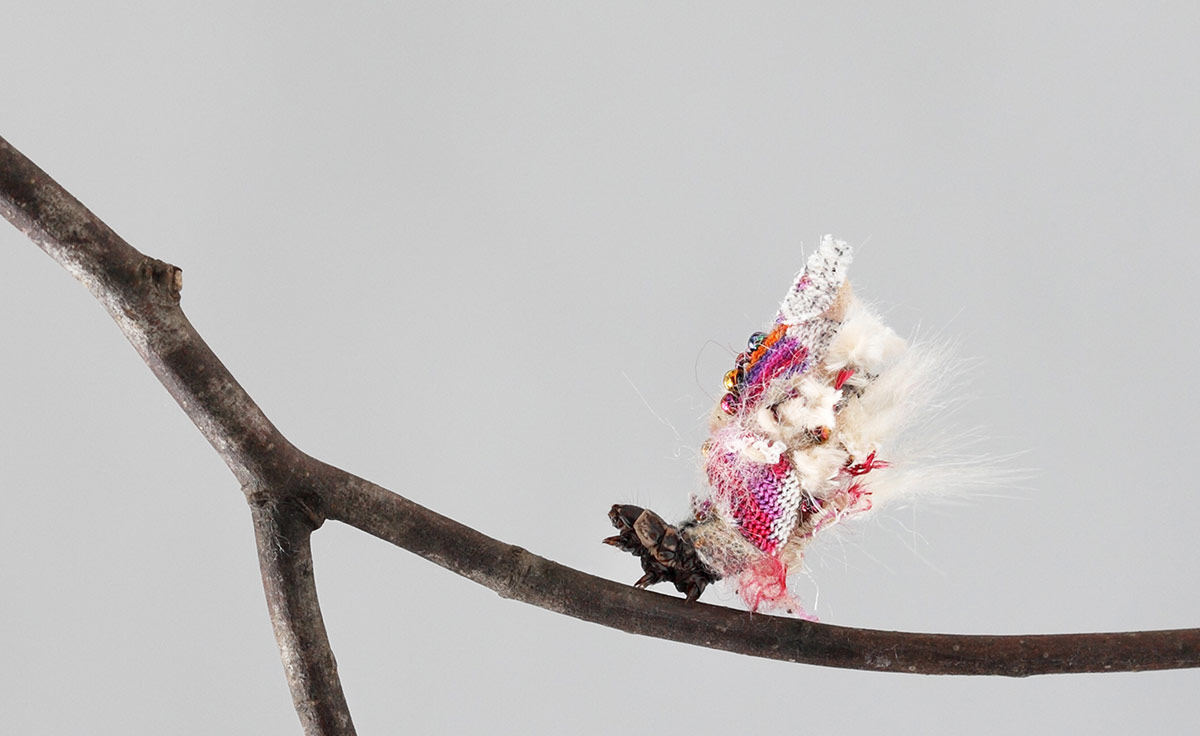
In “girl, girl, girl…” the female bagworms created protective cases from cut pieces of women’s clothing. They use the protective case for their entire lifespan and wait for the male bagworms to come mate. How does it reflect the relationship people have with fashion and dating?
For humans, it’s a much more complex thing. Generally speaking, for women here in Japan there’s a lot of variation, a lot of accessories, clothing, nails, makeup, tons of shoes, purses, bags, etc—far more than the guys here in Japan, who are not as accessorized. And obviously, it’s for the woman to wear them for herself. She’s enjoying the fashion. She likes dressing up, but also, it’s to attract others.
The reproduction and transfer of culturally symbolic structures are common elements seen throughout your work—like the wedding chapels in your 3D-printed hermit crab shells. You’ve mentioned that many of these European chapels are built in Japan for the sole purpose of weddings, not as religious facilities. What are your thoughts on the concept of originality and cultural identity?
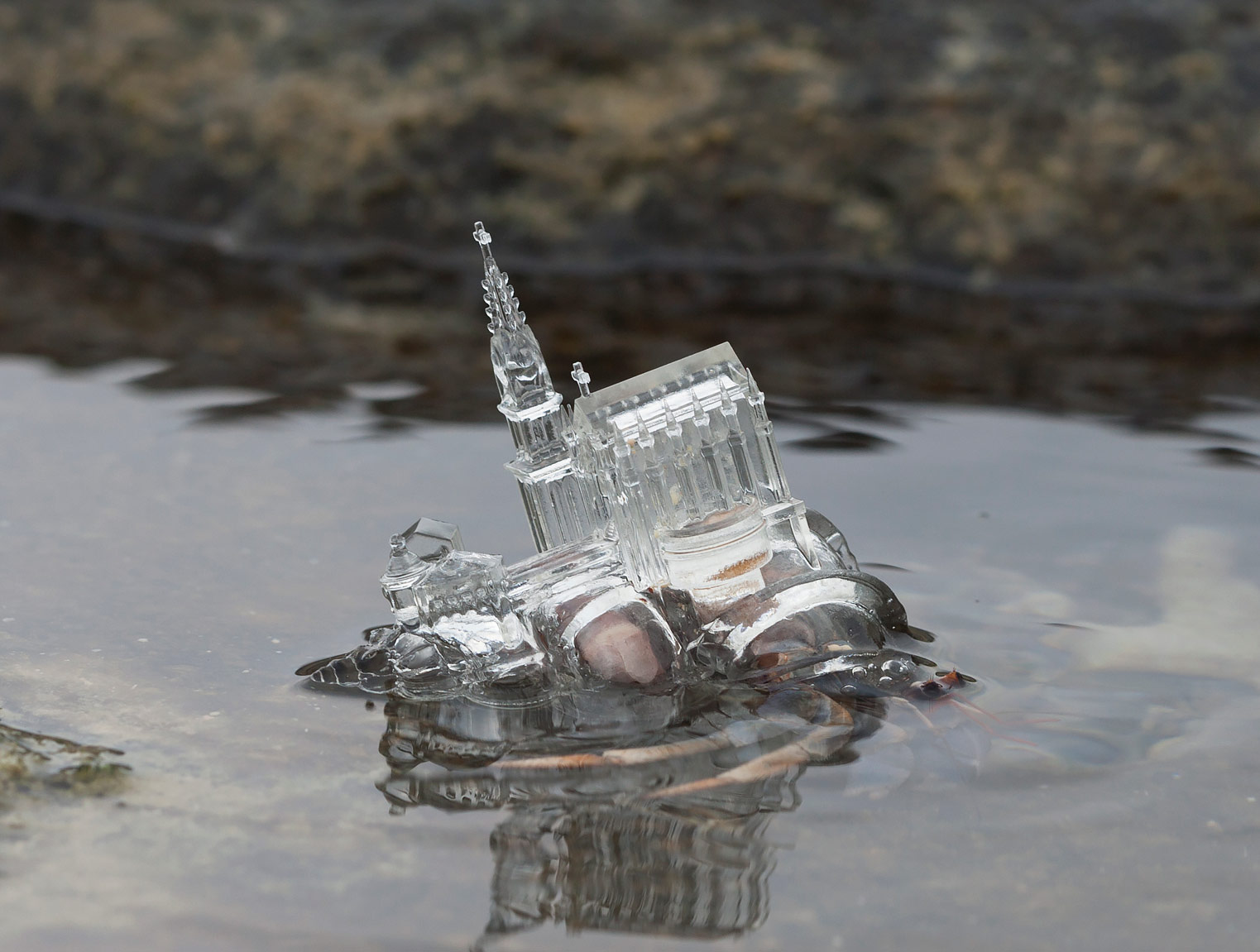
A lot of parts of Japanese culture originally came from China. It was borrowed from China and converted into Japanese use. Now in recent times, a lot of culture in Japan has been brought from Europe and the West. Maybe it’s because Japan has an island culture. They are so cut off that they are easily influenced by things outside. But in any case, we are very much influenced by things going on outside our country, especially in modern times. I find it strange and weird how many people borrow aspects of Western civilization and then adjust and change them, especially Western clothing. Here in Japan, they bring all these types of Western entities—clothing, architecture, furniture, food—and then arrange them in very unique and interesting ways.
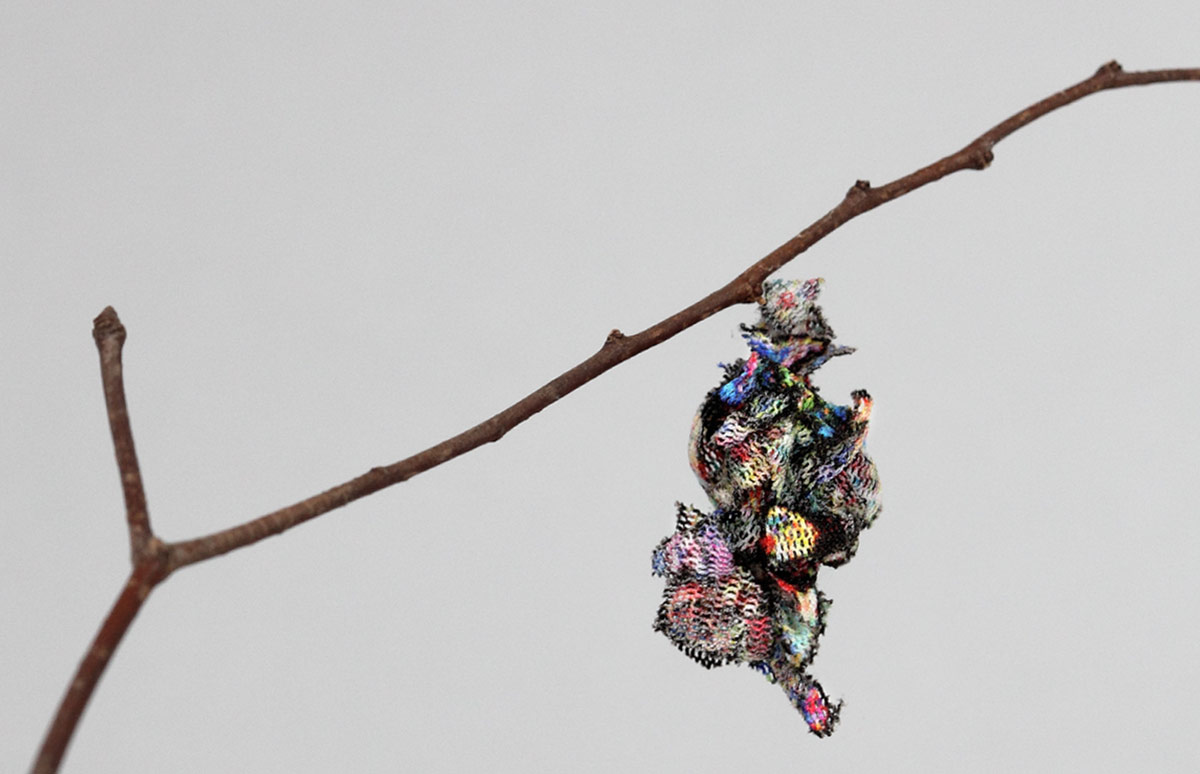
In a similar way there are now Western things, now there are Japanese things. It’s wa-fu, “like Japanese,” clothing. But when we talk about Japanese clothing or Japanese style here in Japan, we often use “like wa-fu” (like Japanese-y). Over time, Japanese culture is being overtaken by the influences from abroad and it’s changing. It’s not quite Japanese anymore. It’s Japanese mixed with something else.
Another example, now we don’t use chopsticks all the time. It’s forks and knives. Even the way we live is adjusted by the influences from abroad. This project, the yadokari hermit crabs, there’s a connection there. Although it’s not exactly the same, they borrow something that’s not theirs and they use it to live their lives in.
How do you think your work has evolved over the years?
My main thrust, the core of my work hasn’t changed much over the years. It’s just gotten bigger. My starting point, especially the yadokari hermit crabs, was in France. I was collaborating with the French Embassy. There was sort of an exchange that allowed me to put those on display. After that started going well, I thought I would include other countries to let it [the hermit crabs] travel around to various other places.
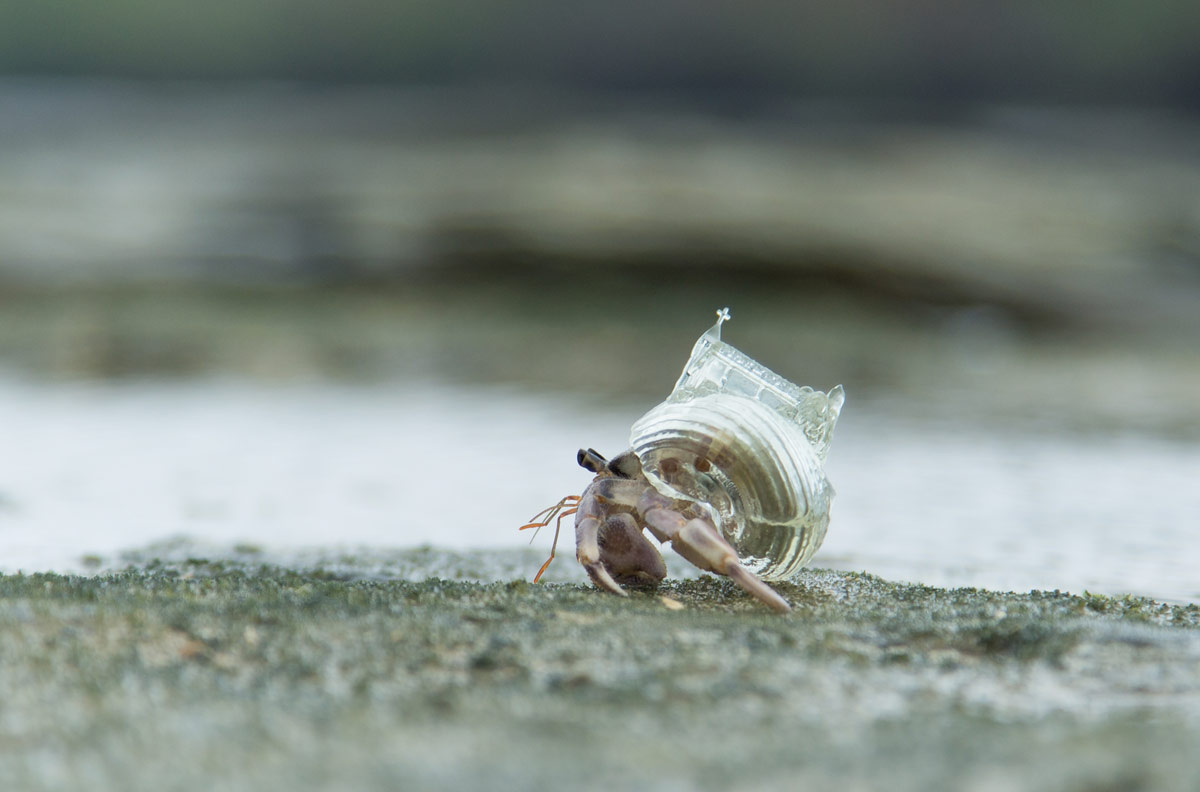
After that, it slowly got bigger, so the need to get new shells grew and I would add new pieces to the series. This is one of my works that’s a continuing process. It’s not really ended because the hermit crab keeps getting bigger, so I keep making places for it to travel to. The motif of this project was about people who have to move—who have to travel. And one of the things that inspired me was to create something that could continue to overcome state boundaries and something that was more global and international, not limited by a certain country. Something that would leap over them. Not really so much a trip, but as a representation of people and things that have to globally expand and go to different places.

What motivates or inspires you?
I’m originally from Tokyo, so I never really knew what nature was. It was always seen from afar. I never really had a chance to experience it. And now the world has entered into the internet age where everything is online. We’re living in an artificial society, which is created by humans for humans. It’s very distant from nature. There was a time when I started to think, “What is real reality?” Living in an artificial society, a city, the “real” world” became unclear. I wanted to figure out something that could breach this barrier that could take the manmade to the nature.

I once saw this play by Kara Jūrō. This is a play that happens inside a tent. At the end of the show, they pull up the outside of the tent and you’re suddenly exposed to the world outside of this tent. The actors don’t exit stage left. They leave into the rest of the world. This was very moving for me. The mix between the fiction and the reality was very compelling for me. My motivation is not so much about experiencing nature, but what I want to do is create a mix, an amalgam of nature and artificial society.
Images courtesy of Aki Inomata, translation courtesy of Gavin Greene

